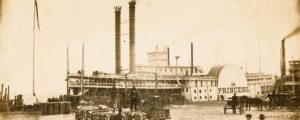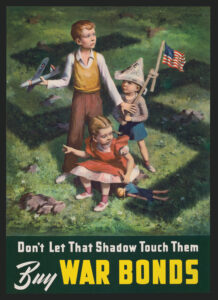A forgotten American treasure makes a comeback.
The small maroon bloom is morbidly elegant, not much bigger than a thimble, with an aroma said to faintly resemble rotting flesh. Just about everyone has heard of the pawpaw— towns named Paw Paw dot the American Midwest—but few today recognize the tree’s strangely delicate blossom, its even stranger scent and its pale green, oblong fruit. Europeans settling America, though, marveled at it. According to naturalist John Lawson in – his 1709 Natural History of Carolina: “The Papau is not a large tree [but] it bears an Apple about the bigness of a Hen’s Egg, yellow, soft, and as sweet as anything can well be. [The Indians] make rare Puddings of this Fruit.” Thomas Jefferson was quick to recognize the pawpaw’s virtues, and grew the tree at Monticello. Lewis and Clark’s men— when almost at the end of their return journey—escaped near starvation by eating pawpaws until they could reach a settlement some 150 miles away. A journal entry from September 18, 1806, notes that the men are “entirely out of provisions” but “appear perfectly contented and tell us that they can live very well on the pappaws.”
Although pawpaw breads, pudding, pies and cakes were once common fare, most Americans today don’t even know what the pawpaw is, let alone what it tastes like. But over the past few decades the pawpaw—once derided as “the poor man’s banana”—has been the subject of a horticultural makeover. In 1975 plant geneticist Neal Peterson sampled a pawpaw in the wild and found its creamy texture and banana-mango favor so amazing he single-handedly took up the cause of breeding and reintroducing pawpaws (www. petersonpawpaws.com). Nearly 40 years later, demand for his six pawpaw cultivars has become so great that he has turned production over to six nurseries.
Peterson wasn’t the first to spot the pawpaw’s potential. In 1916 the Journal of Heredity hosted a competition to find the best variety of pawpaw, and a handful of devotees continued this search into the ’40s and ’50s. But interest waned, not to be renewed until Peterson began his quest to identify the historical collections of pawpaws gathered by the early researchers. His pioneering efforts reengaged the horticultural community—and today more than 40 nurseries and orchards are raising pawpaws, and frozen pawpaw puree is available year-round online. A stronghold for pawpaw research is Kentucky State University in Frankfort, where researchers have focused on the pawpaw as a potential substitute crop for the tobacco that so long sustained the state. That’s fitting, given that Daniel Boone feasted on them. But the fragility of the fresh fruit, which quickly spoils about three days after ripening, dampened the prospects for making it a crop to rival bananas or pears.
Nonetheless, pawpaws are enjoying a comeback among those interested in growing edible forests and who like the idea of bringing back a forgotten native species. T’ai Roulston, curator at the Blandy Experimental Farm at the Virginia State Arboretum near Winchester, says he gets requests each year for pawpaw seeds, which he’s happy to gather from pawpaws planted in woodlots on the arboretum’s grounds decades ago. Roulston suspects the pawpaw’s short season and limited availability have helped erase it from the cultural memory. “Eating foods as they were available used to be a bigger part of the culture—and pawpaws were abundant for the taking from trees along the river. Today there is less of the need to go out looking for that experience. And you don’t see pawpaws in stores. Another problem may be that fruit production can be inconsistent: There are good years and bad years.”
The pawpaw was once far too useful ever to be forgotten. Native Americans used fiber from pawpaw bark to weave nets, and their interest in the tree likely helped establish pawpaw patches across nearly the whole eastern half of the United States. In recent years, researchers have come to understand just how it is that Lewis and Clark’s famished men could get by on pawpaws: The fruits are loaded with Vitamin C, antioxidants and healthy fats, and are the only fruit containing all the essential amino acids. The native ecosystem needs pawpaws, too: The striking zebra swallowtail butterfly lays its eggs only on pawpaw leaves. And the leaves turn a handsome gold in fall, to boot.
For all the recent fanfare, the pawpaw can rest comfortably on its historic laurels. Legend has it that George Washington relished chilled pawpaw—with its custard-like texture, it makes for a fine dessert. Today pawpaw is being incorporated into ice cream, pie, muffins and even beer. Albany, Ohio, honors the fruit with an annual festival, awarding prizes for the largest pawpaw (the record is 18 inches in diameter) and the most consumed. The founders would be pleased.
Sarah Richardson is a senior editor for American History.
Originally published in the December 2013 issue of American History. To subscribe, click here.




